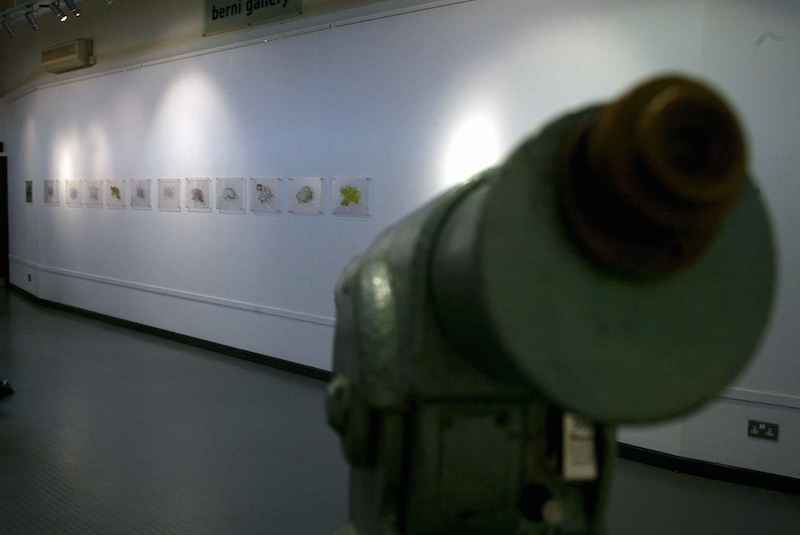The connection between art and the academy and the conundrum of how to make research more creative continues to flit around my desk like an insistent butterfly. It looks like it would be very pretty if only it would sit still for long enough.
Fine artists seem to have a lot of latitude in their practice. It wouldn’t do to put a restraining pin through the middle but it doesn’t hurt to take a bit of a closer look. Last time I looked at this I managed to turn it on it’s head: how to make my previous artworks more academic. It’s a good starting point.
How does an artist look as a practitioner and as a researcher? And does artistic practice look like research? The whole exercise is one of reframing art as an academic practice. The final stage (pending) is then to see how research can be seen as an artistic practice.
The story goes like this: An artist is given a brief to respond to. The brief then is a kind of research problem to be addressed. An example: an exhibition to commemorate 800 years of an island’s independence as part of a year long “Pride in Jersey” programme.
The artist’s initial response to this brief can be seen as a set of research questions – “How to visually represent the island’s heritage?.” or “How has this been previously represented?” “What are the notions of independence, identity and commemoration?”
The artist’s methods will draw on their past work, probably their preferred medium, and act as a means of developing their practice. This might mean going out to collect video footage, or to trawl through the archive for relevant materials and then to collate these materials into some kind of narrative or structure or other that can be presented to an audience with an aesthetic or appealing cohesion. Of some sort. The artist’s methods are not necessarily fixed and increasingly becoming more curatorial.
The data consists of: found objects; video footage; images constructed, collected and collated; and concepts construed. The results are presented as a press release, a catalogue and an exhibition. The whole process, assuming a gallery with some footfall, comes with built in public engagement.

This whole analogy is of course a construct that has probably been rehearsed many times in the art academies as they become increasingly dependent on research funding. It seemed quite trite as I was preparing it. So then I did it again, this time on a different exhibition and the story still held together. And a third time. This seemed to be what Baxendall was getting at but with it being my own work I had direct access to the terms of the problem and the sources of resolution.
At this point it seemed to be worth presenting the results of this to a university social sciences workshop on public engagement. If it’s possible to show how an artwork is created from the perspective of an academic researcher this may well offer some assistance to academics who are contemplating the production of visual materials to disseminate their research.
The next stage then is to work it back the other way and get that creative feed into my own academic practice. Looking from different angles it’s possible to discern the pattern on the butterfly’s wings. It’s time to open the window and let it out now.